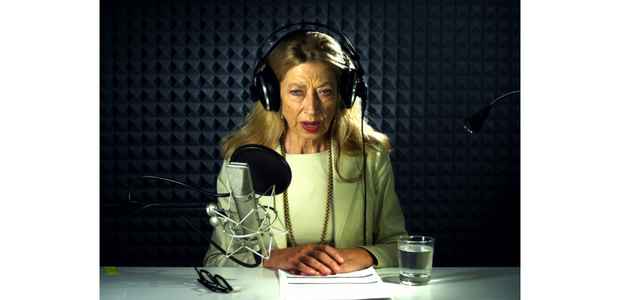Candice Breitz “Treatment”
Andrew Kreps Gallery

This event has ended.
Treatment (2013), a new dual-channel installation by Candice Breitz, brings an original soundtrack to three key scenes from David Cronenberg’s The Brood (1979), a film that the director has described as deeply personal. The Brood’s autobiographical script explores the emotional strain experienced by a couple as their marriage dissolves and a custody battle for their young daughter Candice ensues. Himself going through divorce and fighting for custody at the time of writing The Brood, Cronenberg creates—in the plot of his film—a movie facsimile of the psychological drama that he was facing in his own family life at the time. Brutally exploring the fabric of family nightmares—painful conflicts between father and son, mother and daughter, daughter and father—The Brood is above all a powerful study of dysfunctional parent-child relationships.
For Treatment, Breitz enlists herself, her own mother and father, and her real-life psychotherapist to inhabit and re-create a series of scenes from The Brood. As with the Cronenberg film, Treatment resists indulging concrete autobiographical information, denying onlookers voyeuristic access to Breitz’s actual relationships with her parents and therapist, and focusing instead on the psychological horror that lies potential within family life.
At key moments in The Brood, we observe the renegade psychotherapist Dr Hal Raglan (played by Oliver Reed) administering therapy to traumatized patients. Dr Raglan’s experimental techniques require patients to reenact family relationships as a means of working through their trauma. His treatment involves intensive bouts of therapeutic roleplay during which the doctor typically plays his patients’ abusive parents or maltreated children. Breitz isolates three such scenes for Treatment, projecting them one after the next on a gallery wall, in a constant rotation that evokes the looping repetition of trauma. In removing these vignettes portraying therapeutic sessions from their service to the plot of The Brood, Breitz allows them to exist independently of the film’s fictional narrative.
Stripped silent of Cronenberg’s original soundtrack, the isolated scenes now receive their vocal content from the soundtrack of a second projection of the same size, which mirrors the original footage on the opposite wall of the exhibition space. The second projection consists of a sparse visual documentation of the making of this new soundtrack: set in a professional sound studio, the footage cuts between four individuals, each seated at a microphone, each laboring to project his/her voice convincingly into the body of one of the actors appearing in the original scenes projected on the opposite wall.
The credits of the work confirm the identities of the dubbing team: the artist’s de facto psychotherapist Dr Renate Becker synchronizes the voice of Dr Raglan across all three re-voiced scenes, while the voices of the three patients undergoing therapy are painstakingly recreated by the artist’s mother, father and the artist herself. This move is consistent with Cronenberg’s view of cinema as a space in which to “rehearse the difficult things of life,” and points strongly to Breitz and Cronenberg’s shared interest in the overlap between cinematic analysis and psychological analysis.
In inviting her parents and therapist to vocally re-articulate the domineering Dr Raglan and his longsuffering patients, Breitz literally loops Cronenberg’s cinematic analysis of the psychological wounds that parents inflict on their children through her own mother and father, bringing full circle a fictionalized study of trauma that originally grew out of Cronenberg’s processing of his own family horror story.
Treatment directs our thoughts to the circular nature of the relationship between real life and reel life; to the ability of film to give voice to the stuff of life in the guise of fiction, but also to the alchemy via which cinematic fiction in turn becomes ‘real’ for its viewers, as it vocalizes their actual or imagined experience. In the words of Paul Auster, “Novels are fictions, of course, and therefore they tell lies (in the strictest sense of the term), but through those lies every novelist attempts to tell the truth about the world.”
Media
Schedule
from February 28, 2015 to April 25, 2015
Opening Reception on 2015-02-28 from 18:00 to 20:00